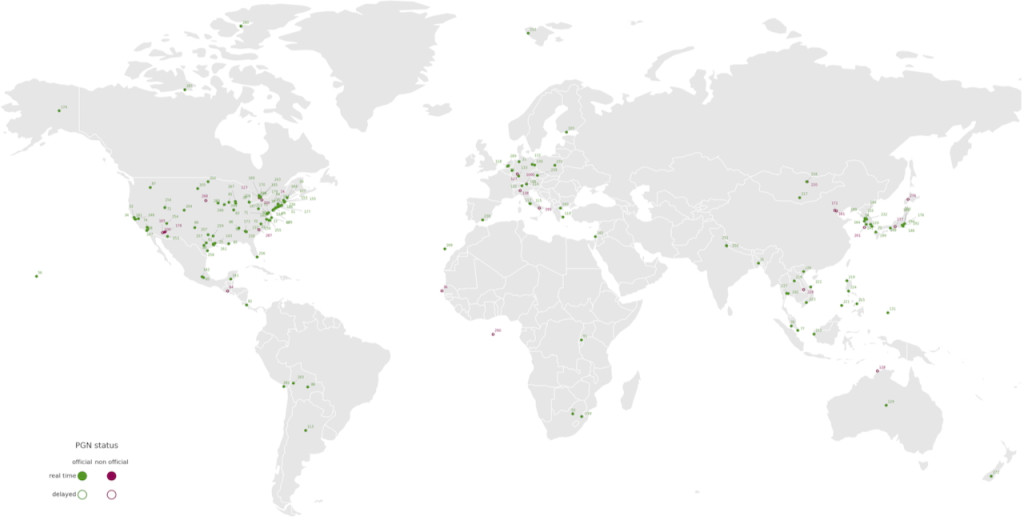
PGN map September 2025
The Pandora spectrometer system is a ground-based, passive, remote sensing platform. The spectrometer and sensing head assembly are carefully calibrated to provide high-quality spectrally resolved direct sun/lunar or sky scan radiance measurements in the UV and visible wavelengths. Descriptions of the instrument can be found at https://pandora.gsfc.nasa.gov. Presently, the NASA Pandora Project and ESA-Pandonia are collaborating to coordinate and facilitate an expanding global network of standardized, calibrated Pandora instruments focused on air quality and atmospheric composition. This effort is known as the Pandonia Global Network (PGN) which endeavors to ensure systematic processing and dissemination of the data to the greater global community in support of in-situ and remotely sensed AQ monitoring. https://www.pandonia-global-network.org
The launch of PGN in mid-2019 represents a programmatic shift by NASA and ESA towards establishing long-term fixed locations focused on providing long-term quality observations of total column and vertically resolved concentrations of a range of trace gases. These observations include total column ozone (O3), nitrogen dioxide (NO2), formaldehyde (HCHO), and sulfur dioxide (SO2). Some instruments, in locations with clear views of the sky, can be used to provide tropospheric and surface abundance of NO2. A major joint objective is to support the validation and verification of more than a dozen low-earth and geostationary orbit-based UV-visible sensors, e.g. Sentinels 4, 5P, and 5, TEMPO, and GEMS. The PGN has recently received support from the US EPA and the Korean NIER to expand and support the network.
Contact information
Alexander Cede, LuftBlick, Fritz-Konzert-Straße 4, 6020 Innsbruck, Austria
Thomas Hanisco, NASA-GSFC, Code 614, Greenbelt , MD 20771, USA
Angelika Dehn, ESA-ESRIN, Via Galileo Galilei, Frascati (RM), 00044, Italy
Emma Knowland, NASA HQ, 300 E Street SW, Washington, DC 20546, USA
Updated September 2025